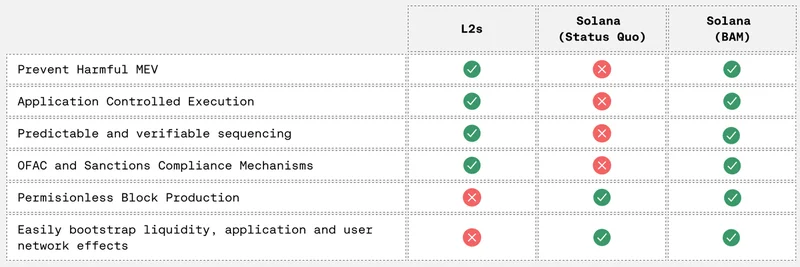In the fast-paced world of blockchain, Solana continues to push boundaries, and a recent tweet from Brian Smith, an accelerator at the Jito Foundation, highlights a game-changing development: the Block Assembly Marketplace, or BAM. Shared on X (formerly Twitter), Brian's post emphasizes how BAM strengthens Solana's role as the top execution environment in crypto. It gives apps and users more control over their transactions—think Layer 2 (L2) perks but baked into Solana's open, permissionless network.
For those new to the jargon, execution environment refers to how a blockchain processes and orders transactions. Solana's known for its speed and low costs, making it a hotspot for meme tokens like those pumped on platforms such as Pump.fun. But with great speed comes challenges, like Maximal Extractable Value (MEV), where validators or builders can reorder transactions for profit—sometimes at the expense of regular users, leading to things like front-running in meme token launches.
BAM, developed by Jito Labs, aims to fix that. It's a new system that overhauls how blocks are built on Solana, making the process more fair, programmable, and verifiable. According to reports from CoinDesk, BAM introduces private mempools and plugins that let developers customize transaction sequencing. This means meme token projects can prevent harmful MEV, ensuring fairer launches and trades.
Take a look at the comparison table Brian shared:
Breaking it down simply:
Prevent Harmful MEV: L2s and BAM-enabled Solana check this box, while the current Solana doesn't. This protects users from sneaky transaction manipulations, crucial for volatile meme token markets.
Application Controlled Execution: Again, a win for L2s and BAM Solana. Apps can dictate how their transactions run, giving devs more power.
Predictable and Verifiable Sequencing: BAM brings this to Solana, ensuring transactions happen as expected—no surprises.
OFAC and Sanctions Compliance Mechanisms: Supported across the board except current Solana, helping with regulatory stuff.
Permissionless Block Production: Current Solana shines here, and BAM keeps it intact, unlike some L2s.
Easily Bootstrap Liquidity, Application, and User Network Effects: Both current and BAM Solana support this, fostering growth in ecosystems like meme tokens.
The tweet calls to "Grow Solana with BAM," and it's spot on. For meme token enthusiasts, this could mean smoother trading, reduced sandwich attacks (a type of MEV where your trade gets squeezed for profit), and more innovative tools from projects. Jito's own announcement notes BAM's launch in September 2025, backed by big investors like a16z, signaling strong confidence.
Replies to the tweet add flavor. One user asks about institutional adoption, like VanEck's Jito SOL ETF, hinting at real-world impact. Another stresses the need for light nodes for true decentralization— a fair point in ongoing blockchain debates.
Overall, BAM isn't just tech talk; it's a step toward making Solana even more user-friendly for the next wave of meme token mania. If you're trading or building on Solana, keep an eye on Jito's updates via their site. This could redefine how we interact with the chain.



